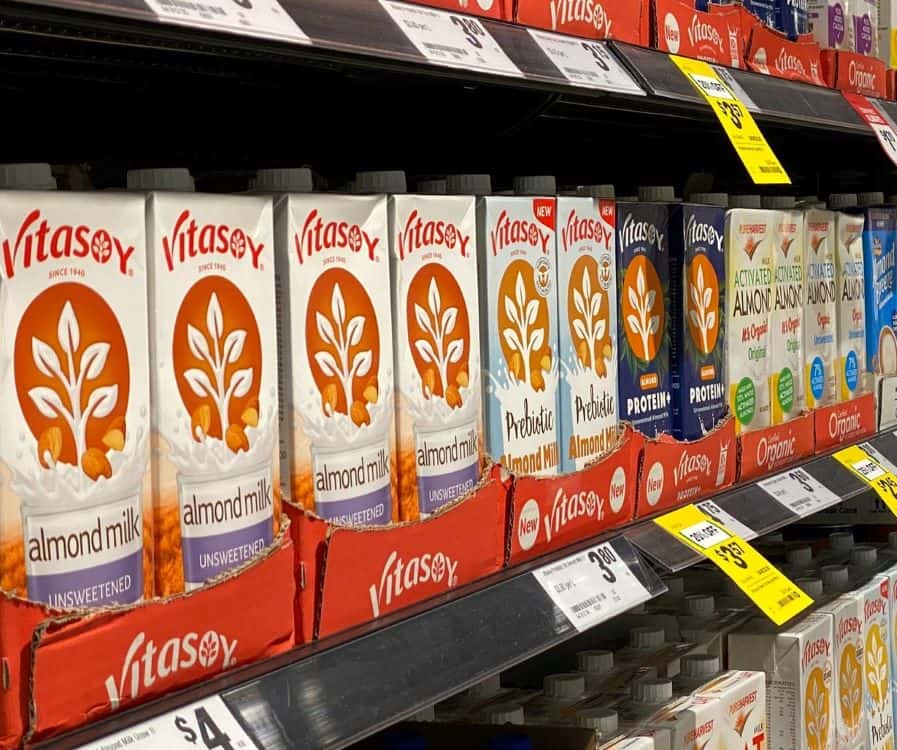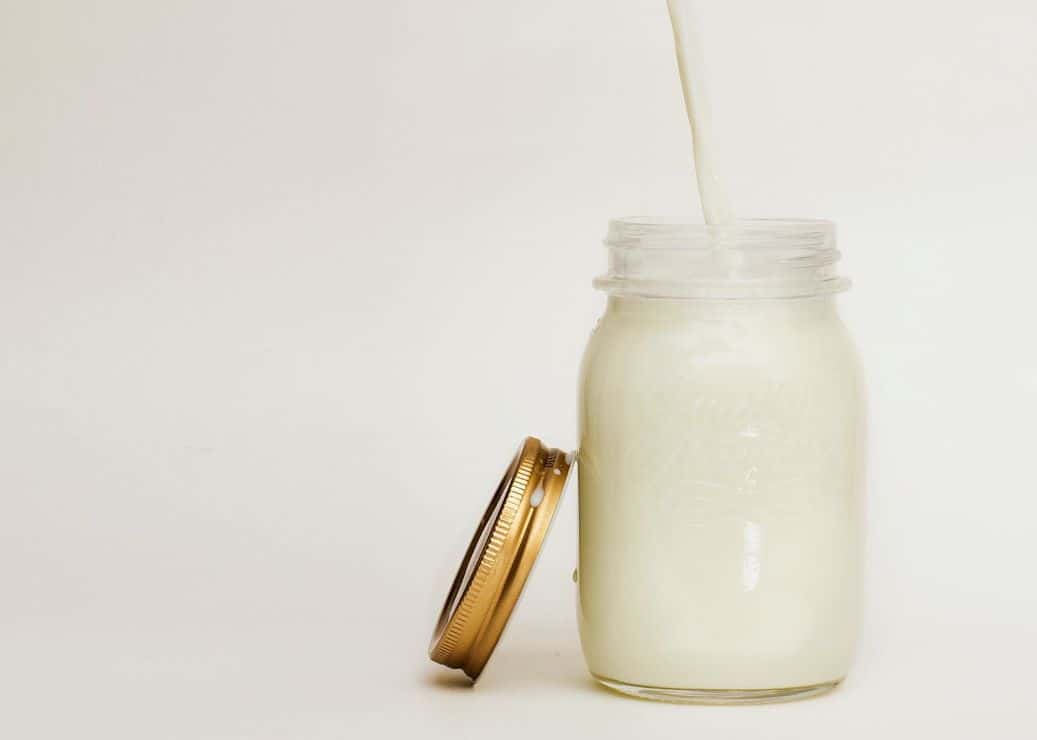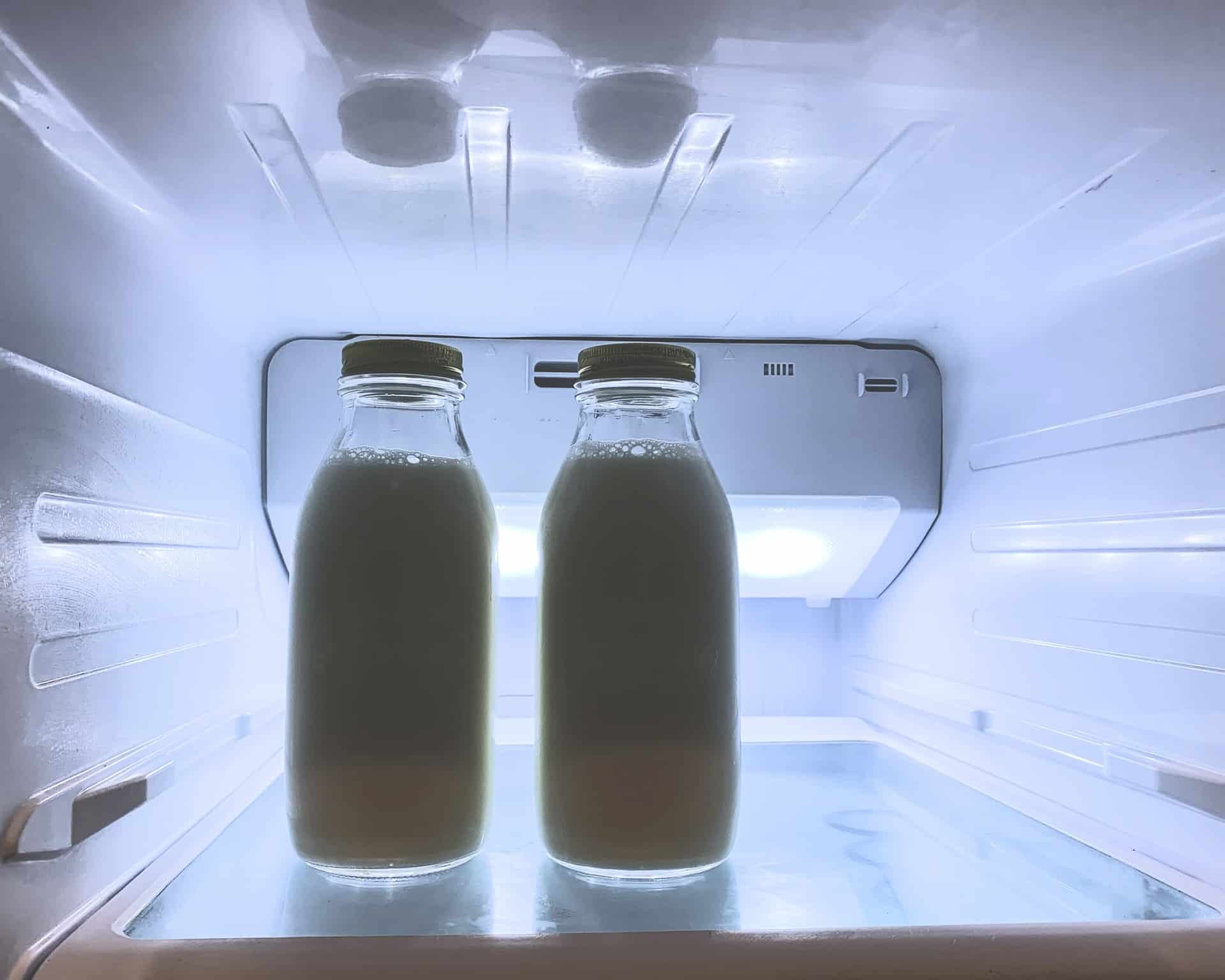Almond milk is a plant-based milk substitute made by blending almonds and water. Thanks to its sweet, nutty flavor and its many health benefits, it has risen to become the most popular alternative milk. However, even though more and more people are drinking almond milk, not everyone drinks a carton a day. Thus, many people are considering freezing their almond milk to extend its shelf life.
Can almond milk be frozen? Most brands of almond milk advise against freezing their product, but you can freeze it as long as you know what to expect. Freezing almond milk causes the solids to irregularly separate from the liquids. The almond milk will remain edible, and it can be reconstituted by blending; however, the consistency is often significantly reduced.
This article will provide instructions for the three different ways that almond milk can be frozen in order to extend its shelf life. Also discussed is how to properly thaw frozen almond milk and how to “fix” the separation of solids and liquids that occurs. Finally, this article also explains how to tell if your almond milk is no longer safe to drink.
How to Freeze Almond Milk

If kept in an airtight container, homemade almond milk can last for 3-5 days in the fridge. On the other hand, commercial almond milk is ultra-heat treated, which kills any bacteria that may cause the milk to spoil. Commercial or “supermarket” almond milk is also packaged in sterilized containers.
These mean that commercial almond milk is shelf-stable and can stay at optimum quality for 3-4 weeks after the “use by” date on the box. It can also be stored at room temperature while still sealed. Once unsealed, however, the carton needs to be kept in the refrigerator, and its contents need to be consumed within 7-10 days.
This relatively short shelf life upon opening has led many to wonder if it is possible to preserve almond milk in the freezer. Indeed, it is possible; in fact, freezing is considered the only way to extend the shelf life of an opened container of almond milk. Below are three ways to freeze almond milk to make it last longer.
-
In the Box

If you got your almond milk through the commercial route (i.e., from the supermarket), the simplest way to preserve it is to freeze it in the original container. Other methods rely on transferring the milk to different containers, which exposes it to oxygen and microbes that can increase the rate of spoiling. Freezing in the original container minimizes this and helps retain freshness.
However, thawed almond milk has a shorter shelf life than unfrozen milk even when refrigerated, at only 3-5 days. Thawed milk should never be refrozen, so a caveat of this method is that once thawed, you are forced to use up the whole carton in a relatively short period of time.
When using this method, make sure to remove some of the almond milk to leave headspace that the liquid will expand into upon freezing. Without this step, the container may deform or even burst open, wasting milk in the process.
-
As Ice Cubes

Almond milk can also be frozen as ice cubes, just like you would do with water. As before, make sure not to overfill each compartment as almond milk contains a lot of water that expands upon freezing. The filled ice tray can be left overnight to flash-freeze. Once frozen, the almond milk ice cubes should be transferred to a freezer bag, making sure that all the air is pushed out before it is sealed.
Freezing almond milk in small portions enables you to thaw only what you need; furthermore, it also makes the changes in texture and taste less noticeable. This method is perfect for smoothies, where the almond milk ice cubes can replace regular ice cubes to make the drink creamier.
-
In Containers

This option is a good compromise between freezing in the original container and as ice cubes and is best if you know exactly how much almond milk you use at a time. A single serving of almond milk can be portioned out for each container.
Make sure to use airtight, freezer-safe containers. As with the first option, there should be space in the containers for the milk to expand. You should also mark the date of your frozen almond milk. It can last up to 6 months, but after that, you should throw it away.
How to Thaw Almond Milk
Frozen almond milk can be defrosted by placing it in the refrigerator overnight; alternatively, the milk (as ice cubes in a sealed bag or in frozen sealed containers) can also be thawed in a lukewarm (not hot) water bath. Almond milk should never be thawed at room temperature. This can worsen the adverse effects of freezing and accelerate spoilage.
How to “Fix” Thawed Almond Milk

Freezing almond milk extends its shelf life from just seven days to up to six months, but it results in changes in consistency and texture. Almond milk separates because it is a suspension of mostly fat and protein in water: it is not genuinely homogeneous.
Unfortunately, the water that comprises 88% of the almond milk freezes earlier than the rest of the components. When the water molecules freeze, they link up to form an ordered structure. This pushes the other components (which include cellulose and fiber) to the bottom of the container.
The fat in the almond milk naturally settles to the bottom because it is heavier than water. When the freezing water molecules push the other components downward, these dissolve into the fat layer. Ultimately, the water ends up on top, and the solids are pushed to the bottom.
This separation becomes fully visible once the almond milk is thawed; however, this does not mean that it has spoiled. It also remains nutritionally identical to fresh almond milk. Thawed almond milk can be “fixed” by blending it for 20 to 30 seconds. This results in a foamy drink, but it is perfectly safe to consume.
How to Use Thawed Almond Milk
Thawed almond milk does not taste the same as fresh almond milk, so drinking it straight from the glass may not be the best option. However, it is popular to use thawed almond milk in recipes. It can be added to coffee or tea as a whitener (a non-dairy creamer) or substituted for cow’s milk in baked goods or cold desserts. Certain recipes that call for coconut milk (such as curries) can use almond milk instead.
Does Almond Milk Go Bad?

Once almond milk is thawed, it spoils relatively quickly, so you should watch out for signs that it has gone bad. Three things will indicate spoilage: smell, texture, and taste.
If your almond milk has a sour odor similar to spoiled milk, it too may no longer be safe to drink. If it also tastes sour, it is most likely rancid. Lastly, if you pour your almond milk into a glass and the liquid is thick in certain parts or is gloopy and slimy, it needs to be thrown out.
Final Thoughts
Almond milk can be frozen as long you’re okay with the components being separated upon thawing. Nevertheless, thawed almond milk can be partially rescued by blending for 20-30 seconds. To minimize the negative effects of freezing, almond milk is best frozen in its original container; however, it is also possible to freeze it as ice cubes or in small, airtight containers. Thawed almond milk has gone rancid if it tastes or smells sour, or if it becomes slimy.
